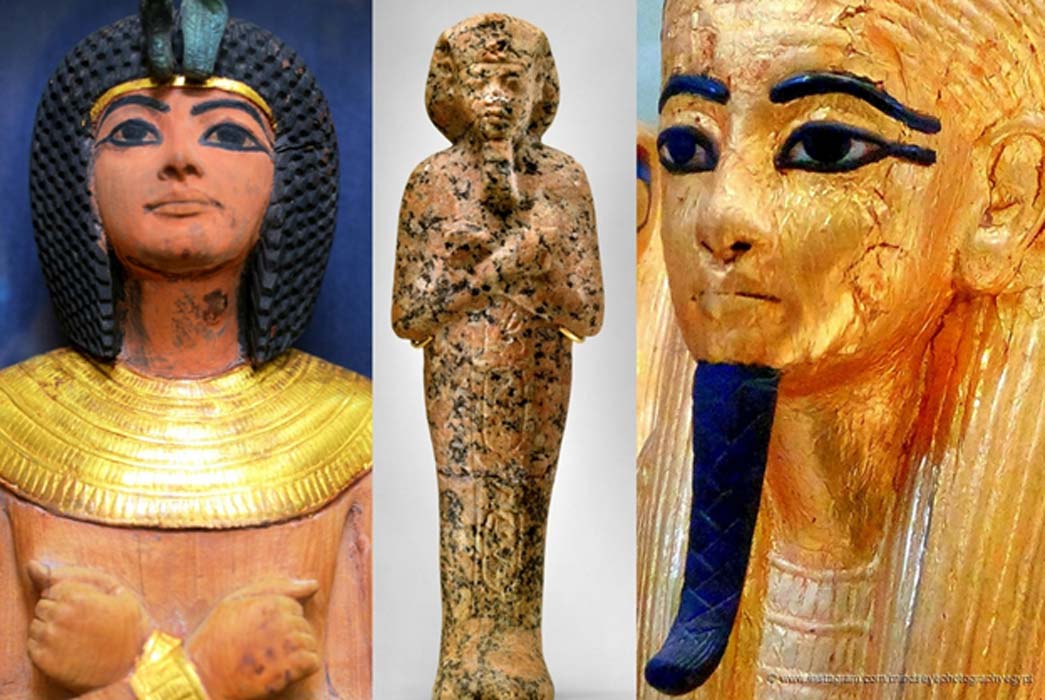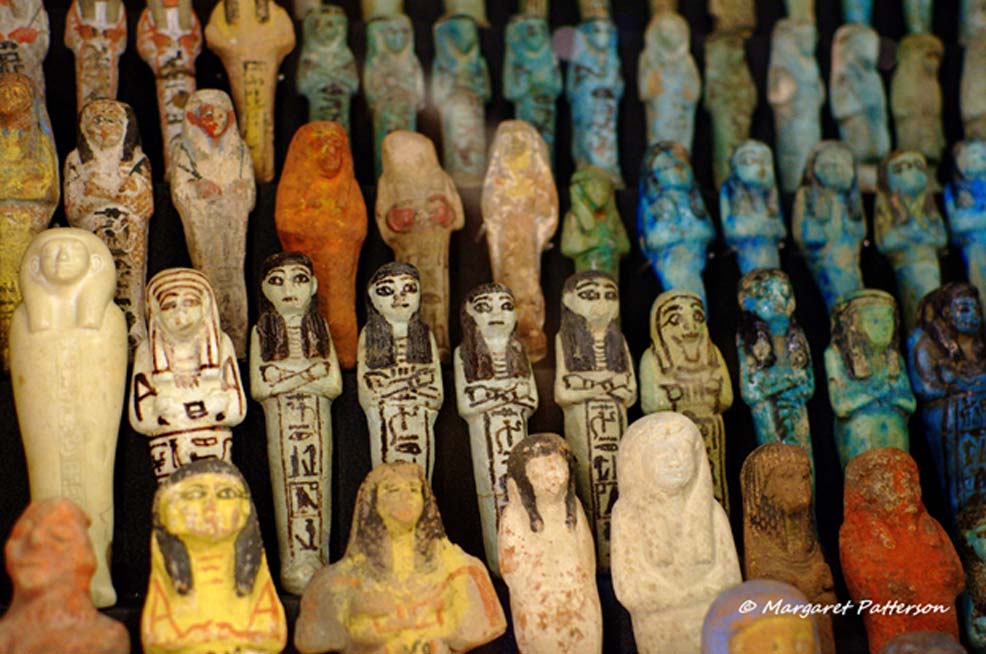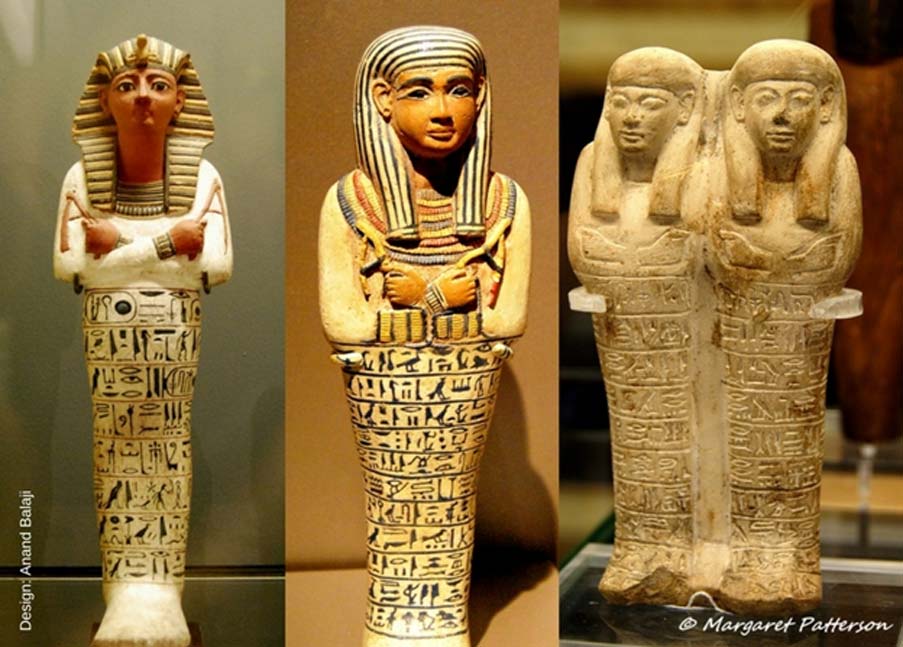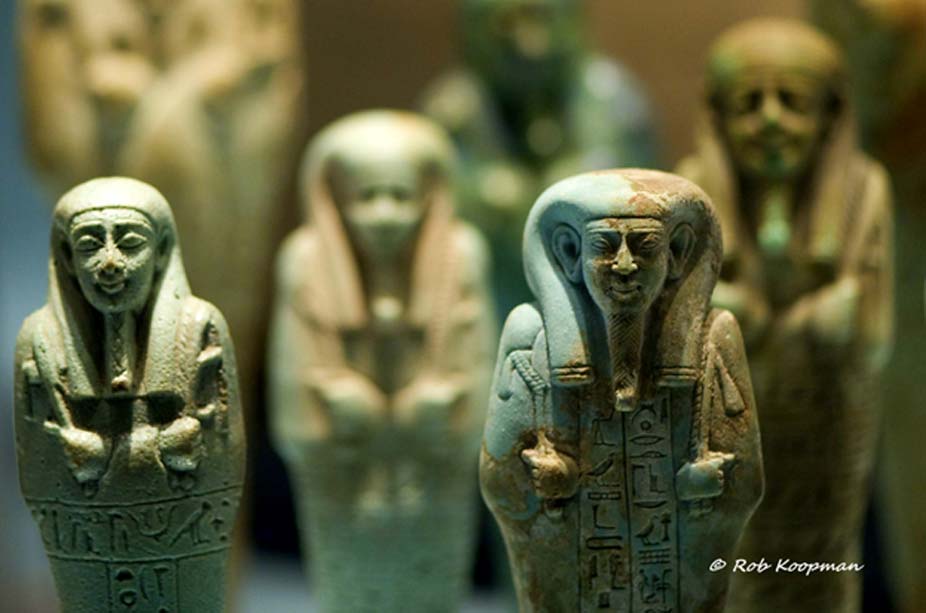
Deputies of the Dead from Amarna to Thebes: Mesmeric Shabtis of Akhenaten and Tutankhamun—Part I
Among the most important items that made it into the crypts of both kings and commoners alike were shabti figurines that served to ensure that the Afterlife was one long holiday for their masters. The sepulchers of Akhenaten and Tutankhamun too contained these little magical deputies; but the specimens were rather unconventional when compared to the norm.

Shabti (or Ushabti) dolls were ancient Egyptian “Answerers” for the deceased in the Hereafter. An extensive collection of finely decorated figurines made from different materials, including faience and limestone, can be seen in this picture. Manchester Museum.
The ancient Egyptians envisaged each and every requirement in the Hereafter in this world itself. They constructed tombs in which to house their mortal remains for all eternity; and which would help rejuvenate and resurrect body and soul after death. These sumptuously decorated sepulchers were well-stocked with food, clothing, jewelry, cosmetics, furniture, model tools and most important of all (U)shabti – funerary figurines to do one’s bidding in the next world. Tutankhamun’s tomb, like those of his forbears, contained hundreds of them.

(From left) Painted shabti of Ramesses IV. 20th Dynasty; decorated shabti of the Lady of the House, Sati - reportedly from Saqqara. 18th Dynasty, reign of Amenhotep III; and, a double shabti of Huy and Ipuy, a father and son pair. 18th Dynasty. Louvre Museum, Brooklyn Museum and Museo Egizio, Turin, Italy. (Photos: Heidi Kontkanen and Margaret Patterson)
Assured that the Afterlife was the same as this one, the Egyptians, who were a practical people, knew that Sekhet-Aaru (Field of Reeds) was not going to be a carefree idyllic paradise. Work was definitely on the cards, and having toiled hard in this mortal plane, they devised a method by which to avoid labor altogether in the Hereafter. Shabti (answerers) figurines were the answer. ‘Shabti’ is derived from the ancient Egyptian word “swb” which meant “stick”; a word that also corresponded with “answer” or “wsb”. Therefore, shabtis were called ‘The Answerers’. These dolls, numbering anywhere from a mere two to several hundred, were placed in burials to perform all manner of tasks on behalf of the deceased in the next life.

An army of funerary servant figurines made of faience stand guard, ready to do their master’s bidding in the Afterlife. The number of shabtis in a burial reflected the owner’s status and prestige whilst alive. Rijksmuseum van Oudheden, Leiden. (Photo:Rob Koopman/CC BY-SA 2.0)
The Early ‘Answerers’
Each such exquisitely handcrafted deputy of the dead was inscribed with the name of the departed along with magical formulae that endowed them with special powers. Additionally, these (mostly) statuettes were equipped with tiny agricultural implements— such as hoes, baskets, mattocks and chisels—that were either placed in their hands or painted onto the surface. Hence, even royal shabtis are often depicted clutching a pick and a hoe, and with a basket hanging over one or both shoulders. Shabti dolls, that varied in size from the common miniatures to quite large ones, were made from various materials, including wax, clay, wood, stone, terracotta. Examples of bronze or glass figurines are rare, while the most common material was faience.




